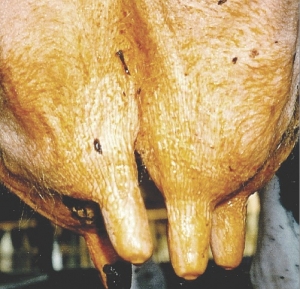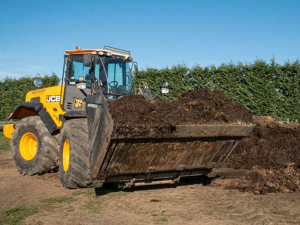GEA subsidiary FIL markets teat spray products.
Mastitis costs the New Zealand dairy industry about $200m each year in lost earnings, the company says. The cost to individual farmers can include lost days in milk, milk quality penalties and culling of stock in acute or repeat clinical cases.
Sanitising teats after milking has been a key component of mastitis control programmes worldwide for many years, and trials have consistently shown effective teat spraying significantly reduces the presence of mastitis-causing bacteria.
FIL business and new product development manager Trevor Gulliver says the most commonly used teats sprays in New Zealand are iodine and chlorhexidene.
While both are fit for purpose, iodine is currently the favoured sanitiser with about 70% of dairy farmers preferring to use it, especially during early lactation when wet, muddy conditions create an ideal environment for bacteria to flourish.
He adds that chlorhexidene teat sprays have their place and are often used by farmers who have sensitivity to iodine in their herd, or simply just prefer that product over others.
He says the best products kill bacteria and improve teat health.
FIL says it has the only teat care range on the market that uses manuka honey in some products; this has proven anti-bacterial and healing properties.
“The inclusion of manuka honey helps the spray adhere to the teat surface itself, thereby improving teat condition generally, ensuring they remain soft and supple,” says Gulliver. “Teat care and udder health [demand] coverage, coverage, coverage.
“You need to ensure good coverage of all four teats including the ‘face’ of the front teats, which often get missed but are the ones most prone to becoming dry and cracked.”
Dirty equipment, using the wrong dilution rate and using a spray mixture more than seven days old will jeopardise the effectiveness of the teat spraying. “The cleanliness of your equipment is critical to the effectiveness of your teat spraying programme.”
Gulliver advises farmers to regularly wash and scrub spray and mixing containers regularly with only warm water, and to never use the same jug for measuring teat sprays and detergents.
He says the same rule applies to farmers using iodine and chlorhexidene sprays because it is extremely important to clean equipment thoroughly when switching from one product to another.
“Use different containers and mark them clearly, for example teat spray only or detergent only, or chlorhexidene or iodine only.”
Incorrect dilution also changes a spray’s effectiveness and mixing requires particular care to make sure the right amount of water and solution are used.
He adds that dilution rates may differ depending on the time of the season and weather conditions. “FIL has teat spray dilution charts to assist farmers to ‘get it right’, showing the different dilution rates for both types of sprays and what rate should be used throughout, early, mid and late lactation.
“We can’t stress enough the importance of reading the instructions and carefully measuring the quantities – there is no room for guesswork.”
Research shows that farmers who use the early lactation dilution rate (4:1) throughout the entire milking season will reduce the rate of clinical mastitis in their herd the following season as well as a reduction in the bulk somatic cell count.
Cutting corners by mixing a big batch of spray to use over a week isn’t advised because the solution will lose effectiveness over time. “We recommend mixing new solutions regularly; the trick is to keep it fresh so no more than a couple of days supply at a time.”
Tel. 0508 434 569
1. A Joe, S Cranefield, I Hodge and T Clarke. Summary of problems identified in 200 milking assessments from mastitis problem herds during 2008/ 2009 in two regions of New Zealand (Waipa and South Canterbury). IDF Mastitis Conference 2010.
















